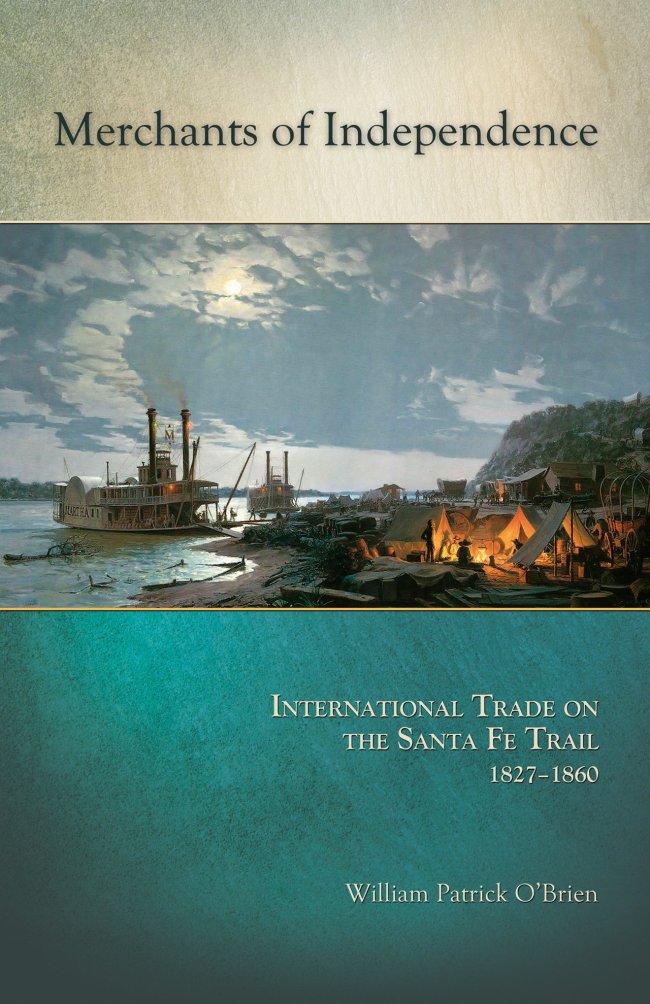Making wagonloads of money in pre-Civil War Independence
By Korea HeraldPublished : Aug. 28, 2014 - 20:13

By William Patrick O’Brien
(Truman State University Press)
Out in Independence, Missouri, the ornamental wagon wheel can still be seen in a few front yards.
Whatever its currency as kitsch, its authenticity as a symbol of the community’s transportation-based past can’t be disputed.
It was the overland transit of pioneer families (along the Oregon trail), prospectors (the California branch-off) as well as commercial freighters (along the Santa Fe Trail) that drove the development of Independence, and which will be celebrated next weekend with the annual Santa-Cali-Gon festival.
To locals, that’s old news.
But much that is in “Merchants of Independence: International Trade on the Santa Fe Trail, 1827-1860,” by William Patrick O’Brien, is revelatory.
The book, recently published by Truman State University Press, represents a deep dive into the dynamics that would render Independence a uniquely cosmopolitan frontier trade capital and one in which business often would trump long-standing ethnic animosities, at least for a while.
Independence grew as a staging area in part for the freighters who carried manufactured cloth and other goods, shipped from England, to Mexico and returned with silver Mexican coins. Municipal officials, eager to control the commerce, levied bigger fines for nonpayment of business licenses ― up to $200 ― while fines for running a gaming house maxed out at $90.
Largely between 1835 and 1855, investors made serious money. In 1854 the “Mexican trade” in Jackson County represented more than $7.6 million, more than $212 million in 2013 money.
With so much cash on the line, Anglo-American investors often sought as much information as possible on their potential trade partners.
By the early 1840s, investors could pay a subscription fee to the Mercantile Agency, the credit reporting firm founded by Lewis Tappan, and receive allegedly inside reports on many Independence entrepreneurs. Some reporters noted which ones were Jewish, African-American or female. O’Brien found the reports archived at the Baker Library at the Harvard University Business School.
“We still don‘t know who these credit reporters were but they made rather candid comments and they had to be well connected in the community to come up with this privileged information,” said O’Brien, an Independence native. He served as the city’s historic preservation officer before joining the National Park Service, for which he today serves as a cultural resource specialist in Tucson, Arizona.
Sometimes investors rose above their own prejudices. At least once, James J. “Jim Crow” Chiles, whom O’Brien identifies as a “notorious racist” and later a member of William Quantrill’s guerrillas, purchased wagons from Hiram Young, a free black who operated the largest such works in Independence.
Young’s success in Jackson County ended upon the arrival of the Civil War, when he fled to Kansas, setting up shop in Leavenworth.
Other ways for investors to gain reliable information regarding possible partners was to swear allegiance to their country and become members of their churches.
David Waldo of Independence became a Mexican citizen, promising authorities that he would forgo his United States citizenship, although O’Brien writes that he never did. Waldo also converted to Catholicism, but later became a member of the First Christian (Campbellite) Church in Independence.
“Some American traders who did convert went through whatever ceremonies required and then never gave it a second thought,” O’Brien said.
And some Anglo-American traders married into Mexican families. In 1845, one year before the Mexican-American War, Isaac Lightner married Carmelita Valdez of Chihuahua, Mexico, in Independence.
“Their motivation was to secure a network for trade,” said O’Brien. “Before the war, under Spanish law, Mexican women could hold property themselves in a way that Anglo-American women could not.
“In the term ‘marriage contract,’ the operative word was ‘contract.’” (MCT)
-
Articles by Korea Herald








![[Graphic News] More Koreans say they plan long-distance trips this year](http://res.heraldm.com/phpwas/restmb_idxmake.php?idx=644&simg=/content/image/2024/04/17/20240417050828_0.gif&u=)
![[KH Explains] Hyundai's full hybrid edge to pay off amid slow transition to pure EVs](http://res.heraldm.com/phpwas/restmb_idxmake.php?idx=644&simg=/content/image/2024/04/18/20240418050645_0.jpg&u=20240419100350)






![[From the Scene] Monks, Buddhists hail return of remains of Buddhas](http://res.heraldm.com/phpwas/restmb_idxmake.php?idx=652&simg=/content/image/2024/04/19/20240419050617_0.jpg&u=20240419175937)

![[KH Explains] Hyundai's full hybrid edge to pay off amid slow transition to pure EVs](http://res.heraldm.com/phpwas/restmb_idxmake.php?idx=652&simg=/content/image/2024/04/18/20240418050645_0.jpg&u=20240419100350)

![[Today’s K-pop] Illit drops debut single remix](http://res.heraldm.com/phpwas/restmb_idxmake.php?idx=642&simg=/content/image/2024/04/19/20240419050612_0.jpg&u=)